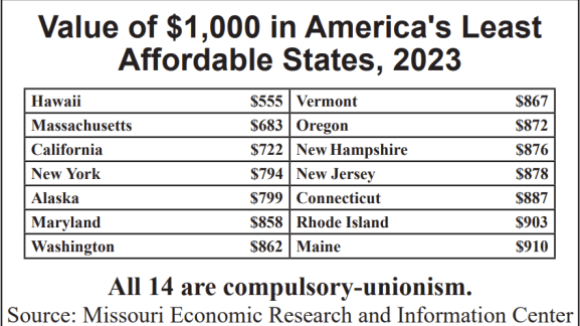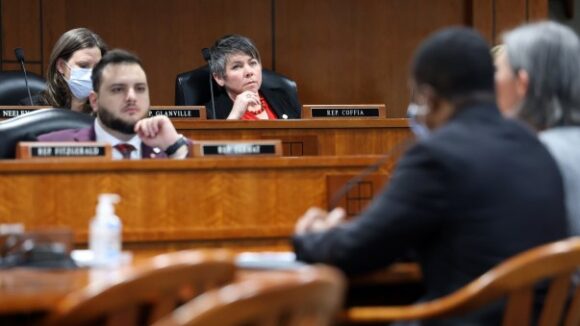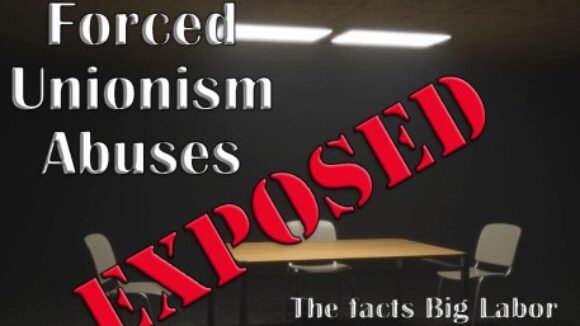Banning Compulsory Dues Curbs Cost of Living
On average, forced-unionism states are 23.2% more expensive to live in than Right to Work states. And decades of academic research show that compulsory unionism actually fosters a higher cost of living.
“During World War II,” labor law authority Donald R. Richberg reports, “there had been over 13,000 strikes — a disgraceful record for ‘patriotic’ labor. In 1946, the first year of peace, the unions made an all-time record of 5,000 strikes, involving 4,600,000 employees and resulting in 116,000,000 man-days idle.”

Americans rose in outrage at these “unreasonable demands on private industry and government.” Consequently, in 1947 a newly-elected Republican Congress passed the Taft-Hartley Act, amending the National Labor Relations Act (NLRA) in 1947 over President Truman’s veto. The Taft-Hartley Act changed the law so that:
While the Taft-Hartley Act was another misguided expansion of federal influence in the private sector workforce, it did affirm the states’ ability to pass Right to Work laws. Right to Work laws establish the principle that a worker cannot be forced to join a union or pay union dues against his or her will. By 1965, 19 states passed Right to Work laws or secured this protection in their state constitution. Today, 21 [now 25] states have Right to Work protection for their citizens.
It was widely held that passage of Taft-Hartley was a setback for Big Labor. In reality, union bosses actually gained a partial victory. The major problem with Taft-Hartley is that it did not return the law to the pre-New Deal standard. It continued to allow workers to be told by government that they must “accept” monopoly bargaining — thereby surrendering their individual right to negotiate with their employers on their own behalf — to get or keep a job, and it forced workers to pay union dues or fees against their will in non-Right to Work states. Taft-Hartley would continue to allow Big Labor abuses, just not as many as before. Private sector unions would continue to grow to an unprecedented size even after passage of Taft-Hartley.
If Taft-Hartley was a partial Big Labor victory, the victory which followed it was complete. Big Labor successfully amended the Railway Labor Act (RLA) in 1951 so both the RLA and the NLRA paralleled each other in their sanction of forcing employees to pay union dues. Lusting for more power even after the partial union victory of Taft-Hartley, Big Labor seized the moment in another blatant power grab: compulsory unionization of government workers.
(Source: Reed Larson, Stranglehold: How Union Bosses Have Hijacked Our Government (Ottawa, Ill., Jameson Books 1999)

On average, forced-unionism states are 23.2% more expensive to live in than Right to Work states. And decades of academic research show that compulsory unionism actually fosters a higher cost of living.

Big Labor Michigan politicians like Betsy Coffia arrogantly dismiss the expertise of independent-minded workers

When Right to Work advocates made their first valiant, although diffuse, efforts to stop the spread of government-imposed compulsory union membership…